We had a choice to make — go right and add 30 minutes our patient didn’t have, or go left through the leeward side of the range, risking severe turbulence and downdrafts that could smear us on the glacier wall like an unwelcome mosquito.
At the behest of the pilot-in-command (PIC) and against every instinct in my body shouting the opposite, we went left. Moments later we were darting along just feet away from the glacier walls and despite my fears of the worst, the air was remarkably smooth. We were hiding in the narrow low-pressure boundary layer, just out of reach of the crushing downdrafts now breaking over the crests.
Rather than the work of “cowboys” or two pilots recklessly pushing the limits, this was just one of many techniques — honed over thousands of successful accident-free rescue missions — allowing for safe operation in an extremely unforgiving environment, where conventional methods simply aren’t feasible. Our PIC also just so happened to be Gerold Biner, legendary rescue pilot and CEO of Air Zermatt, whose impressive resume includes over 15,000 hours of mountain flying and 5,000 successful rescue missions.
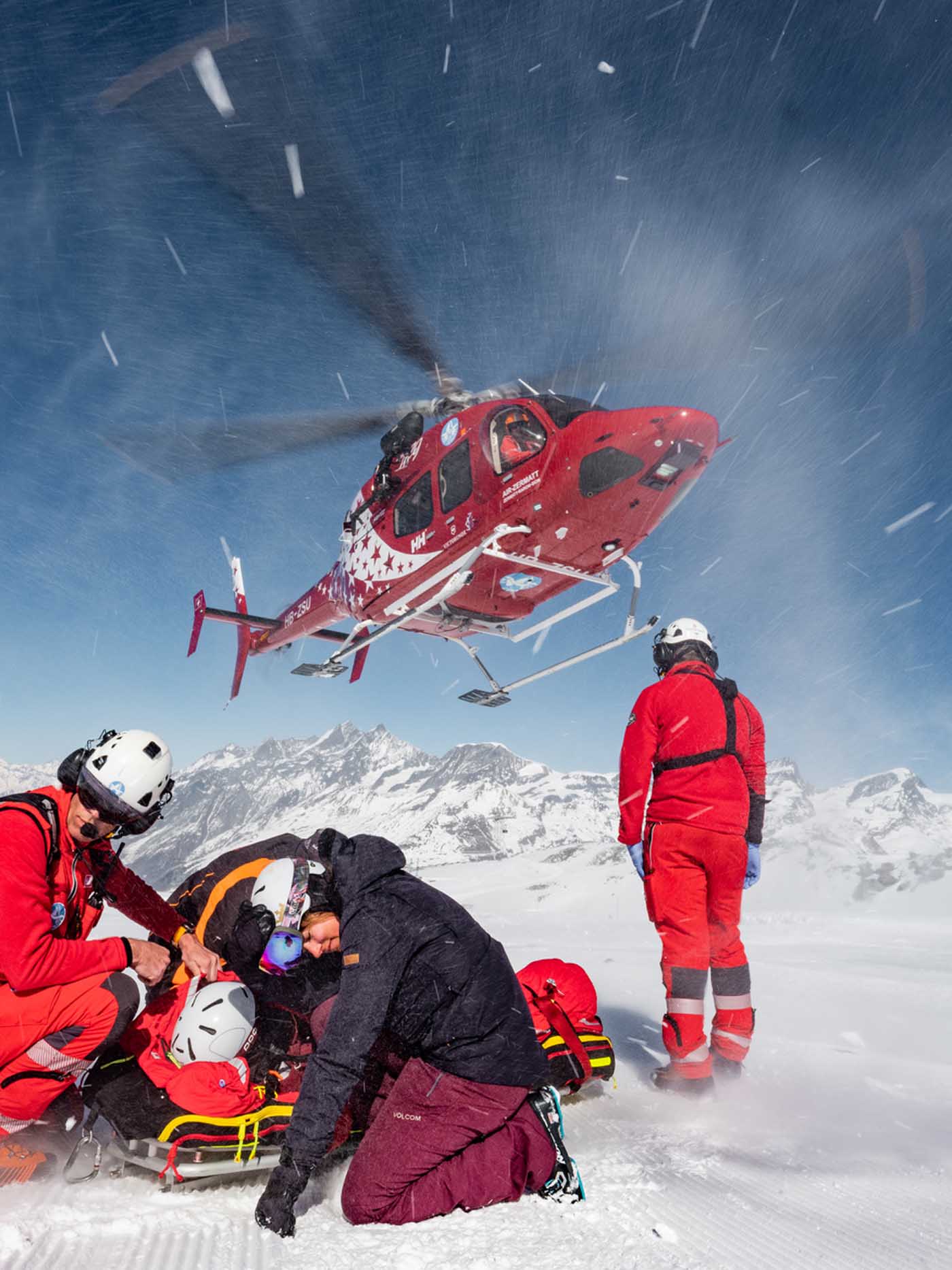
After months of coordination and eager anticipation, I’d been granted an unprecedented view of this legendary operation, one from behind the controls of Air Zermatt’s iconic red Bell 429. While the expressed intent of the trip was to write about the experience for Valor, on an admittedly selfish note, I was also excited for a once in a lifetime opportunity to learn from some of the best high-altitude rescue pilots in the world.
Arriving in Zermatt
Two days earlier as my girlfriend (and translator/videographer/pilot-to-be) and I stepped off the train into the village of Zermatt, I couldn’t help but feel as if we’d left reality behind and entered the real-world manifestation of a snow globe. Nestled in the shadow of the majestic and ever-imposing Matterhorn, the town has been a gateway to the Swiss Alps for adventure seekers stretching back nearly two centuries. At the forefront of mountaineering dating back to the 1800s, the region has a history steeped in danger and tragedy. The subsequent introduction of helicopter air rescue by Air Zermatt in 1973 has helped revolutionize accessibility and safety in the region, single-handedly saving tens of thousands of lives.
Like many in our industry, I first became aware of Air Zermatt through watching The Horn, a docuseries produced and aired by Red Bull TV before its popularity landed it on Netflix. The show is a must-watch for any helicopter or outdoor enthusiast and is just part of the reason why — despite its relatively small size — Air Zermatt has such an outsized influence on alpine rescue. As with any highly effective team, the company also embraces an open exchange of ideas, opening its doors to outside search-and-rescue (SAR) organizations looking to learn and share ideas, whilst also sending its members around the world to do the same.
Stepping into an innocuous-looking freight elevator at street level doesn’t quite prepare you for the view stepping off the other end. Several stories up, Air Zermatt’s primary helipad and hangar might be the closest thing to helicopter nirvana in existence, with rows of glistening Airbus AS350s, EC130s, and Bell 429s, all under the shadow of the Matterhorn. The equipment and facilities are exactly what you’d expect from a Swiss outfit, being impeccably well maintained and absolutely spotless. Flight paramedic Aaron Lehner gave us an in-depth tour of the base, and after a quick cockpit familiarization, we primed our gear for whatever the day had in store.
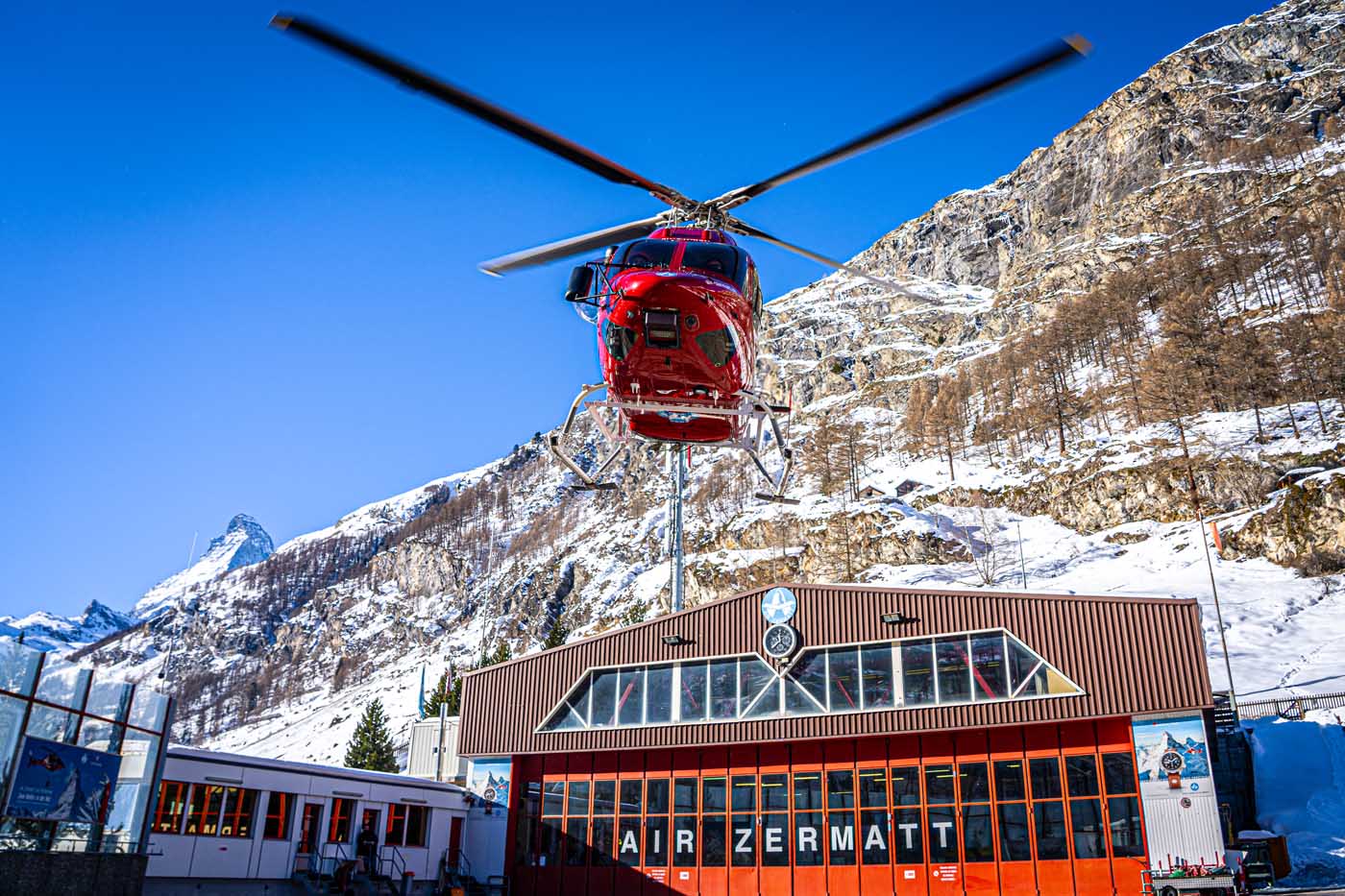
Starting on shift
Following the familiarization, it was SAR or “sit and relax” time — code for waiting between missions, a familiar concept to anyone who’s done the job. This offered a great opportunity to sit down with Biner and the rest of the crew, consisting both of a flight paramedic and doctor. The paramedic is a full-time crewmember and employee of Air Zermatt, but the doctors rotate in on a weekly basis from hospitals all over the region.
The exception being our doctor for the weekend, chief medical director Axel Mann, who would be mentoring flight paramedic Menno Boermans — new to Air Zermatt, but already an experienced paramedic and outdoorsman. In addition to medical duties, the paramedic also functions as a hoist operator for the rotating doctor. In the case of certain highly technical rescues, a mountain rescue specialist will be added to the crew.
By early afternoon I was becoming a bit concerned that my curse (or blessing, depending on your perspective) of never having missions when on shift was striking again. This might seem a bit hasty given that the shift only started at 7:30 a.m., but my visit was timed to coincide with the busy winter season. The rescue teams fly a majority of their approximately 2,000 missions a year during these months. It is not uncommon for crews to take off mid-morning after the slopes open and not land back at the Zermatt base until well after sunset.

Flying the mission
Almost as if on cue, we got a tone for a skier in distress and, as promised, this was the last time we set foot on base until well after dark. After briskly strapping in, we lifted off for the short flight to the slopes. With the exception of our initial pickup from the pad and a few quick demonstrations, Biner had me on the controls the majority of the time.
Despite some initial tension due to the lack of time to get acquainted, I quickly felt right at home in the Bell 429. Visibility was excellent, cockpit layout intuitive, and the rotor system was silky smooth. At most of the altitudes we were operating, power was never an issue and our cruise speed was consistently around 130 knots. Admittedly I was chasing the trim and over-controlling the pedals more than I’d care to admit, but this was more a symptom of too many hours in the Sikorsky HH-60G, which requires little to no use of the pedals.
Our first patient had what appeared to be and was later confirmed to be a minor concussion due to a fall. As we wound our way through the valley to the nearest hospital in Visp, still mostly out of trim, I found the brain bytes to ask Biner why this type of call necessitated a helicopter rather than a ground ambulance.

The reasoning was twofold. The first was both logistical and economic: A trip that takes less than 10 minutes in a helicopter is often an hour or more each way by ground on treacherous mountain roads, which still doesn’t account for the time to get someone down a mountain to a ground ambulance. Given a long enough ground leg when compared to a relatively short air leg, a helicopter can in fact be both economically and logistically more efficient.
The second benefit of a higher call volume through transporting less critical patients is the ability to keep costs down while providing a higher level of care more expeditiously. Generically speaking, if a helicopter emergency medical services (HEMS) or rescue base requires revenues of $10,000 per day or more to remain in operation and it only averages a single flight a day, that results in a five-figure bill for patients. If that same operation flies a half-dozen or more times a day, these bills start to enter the realm of affordability, even when compared to a regular ambulance service.
This model gives the added benefit of having a helicopter on scene in case the injury or condition is worse than expected. This happened on our very next flight when what was thought to be just a broken rib was discovered to be a punctured lung, as the patient’s oxygen level started dropping critically en route to the hospital. Relatively mundane injuries in the Alps are exacerbated due to the higher altitudes and potentially extreme conditions.
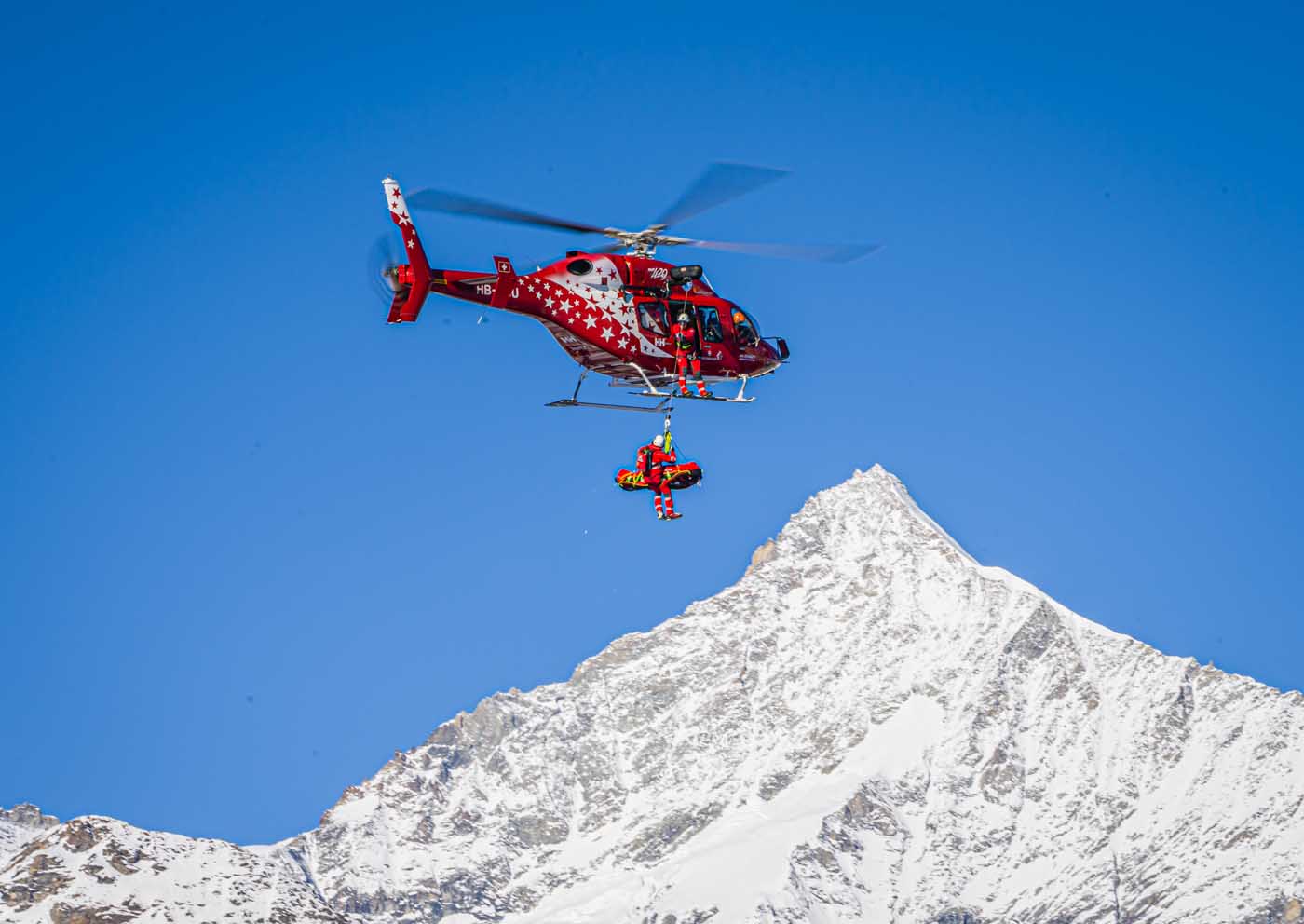
Unique challenges
As we settled into a routine and I grew more accustomed to the aircraft, I finally started to feel as if I was keeping up, with one glaring exception: I didn’t speak the language, or more specifically the languages, plural. Managing several radios was nothing new, but picking my way through four different languages, being only fluent in one, was clearly going to be an insurmountable challenge. All the while, the rest of the crew was seamlessly jumping from German to English, Italian and even French, with Biner keeping up my situational awareness by translating the important bits. To an American who speaks only English and a touch of German, this was remarkably impressive.
Throughout the next two days we continued to have a diverse mix of patients and missions, with one common theme: a majority of the injured were plucked off ski slopes or other extreme terrain. Due to the power demands in high-altitude operations and potential power limitations, the traditional HEMS steep approach with a minimal descent rate to avoid vortex ring state wasn’t practical.
Instead, Air Zermatt preaches the shallow, loaded-rotor approach for the majority of its operations. Starting at the same altitude as, or even slightly below, the area of intended touchdown, the initial deceleration is then arrested with collective, steadily loading the rotor with the goal of falling through effective translational lift (ETL) right at the point of touchdown. This allows for an early touchdown decision point with energy to escape and minimal power required, as ETL is maintained until touchdown with almost no descent rate to arrest.

Biner patiently coached me through the first few attempts and while the timing was difficult at first, it began to feel natural remarkably quickly. It was very similar to the method I’d learned at the U.S. Army’s High-Altitude Aviation Training Site (HAATS). As with anything, there were tradeoffs, one of the most significant being less time to scan for obstacles like wires or towers on final, something there are no shortage of in the mountains of Switzerland.
In an effort to produce the type of aviator capable of safe and consistent operations in such demanding regimes, Air Zermatt has created a regimented and uniquely structured pilot development program. This process can take up to 10 years, as candidates are initially selected from a pool of task specialists (ground crew). After a leave of absence to obtain their commercial pilot license, they start flying tours, followed by heli-skiing and utility work, with the ultimate goal to become a fully qualified rescue pilot. Advancement is not guaranteed, with progress being carefully monitored by Biner and the other senior instructors.

Paying the bills
While the focus of my visit was primarily SAR and HEMS operations, those missions only account for 20 percent of Air Zermatt’s revenue. While the company is for-profit, the Swiss government limits reimbursements to approximately 6,000 Swiss Francs (US$6,000) per hour for rescue and EMS missions. Given most missions are completed in well under an hour, this is a relative bargain, especially when compared to many American HEMS operators. With the staffing, equipment, and resources required, Air Zermatt’s rescue operation is more a public service than a profitable venture.

Air Zermatt instead relies on more traditional sources of income to remain in operation and support its SAR/HEMS services. Our first day in the village, my girlfriend and I noticed a small amount of luggage being transferred via an external load from the heliport to a house no more than 3,300 feet (1,000 meters) across the valley. While this appeared to be a “unique” solution to a decidedly first-world problem (and my sentiments on that haven’t entirely changed), there is some validity to the method. The village of Zermatt has an incredibly unique and strictly enforced ordinance prohibiting the use of cars or other large vehicles. Additionally, many sizable residences in the village aren’t accessible by wheeled vehicles of any sort.
This creates a unique demand for helicopters for everything from traditional loads such as building supplies or concrete, to moving luggage or large personal items. During one set month of the year, residents are allowed to have large items such as furniture airlifted to their house, making for a unique spectacle as couches or beds are lowered into the village via helicopter. Further driving demand for Air Zermatt’s services is the relative geographic isolation and difficulty of navigating the Alps via road or rail. A helicopter charter from any of the major airports in the region can shave up to four hours off the trip into Zermatt. For clients who require a twin rather than the EC130 or AS350, Air Zermatt has the ability to convert its 429s from a rescue to charter configuration in just minutes.
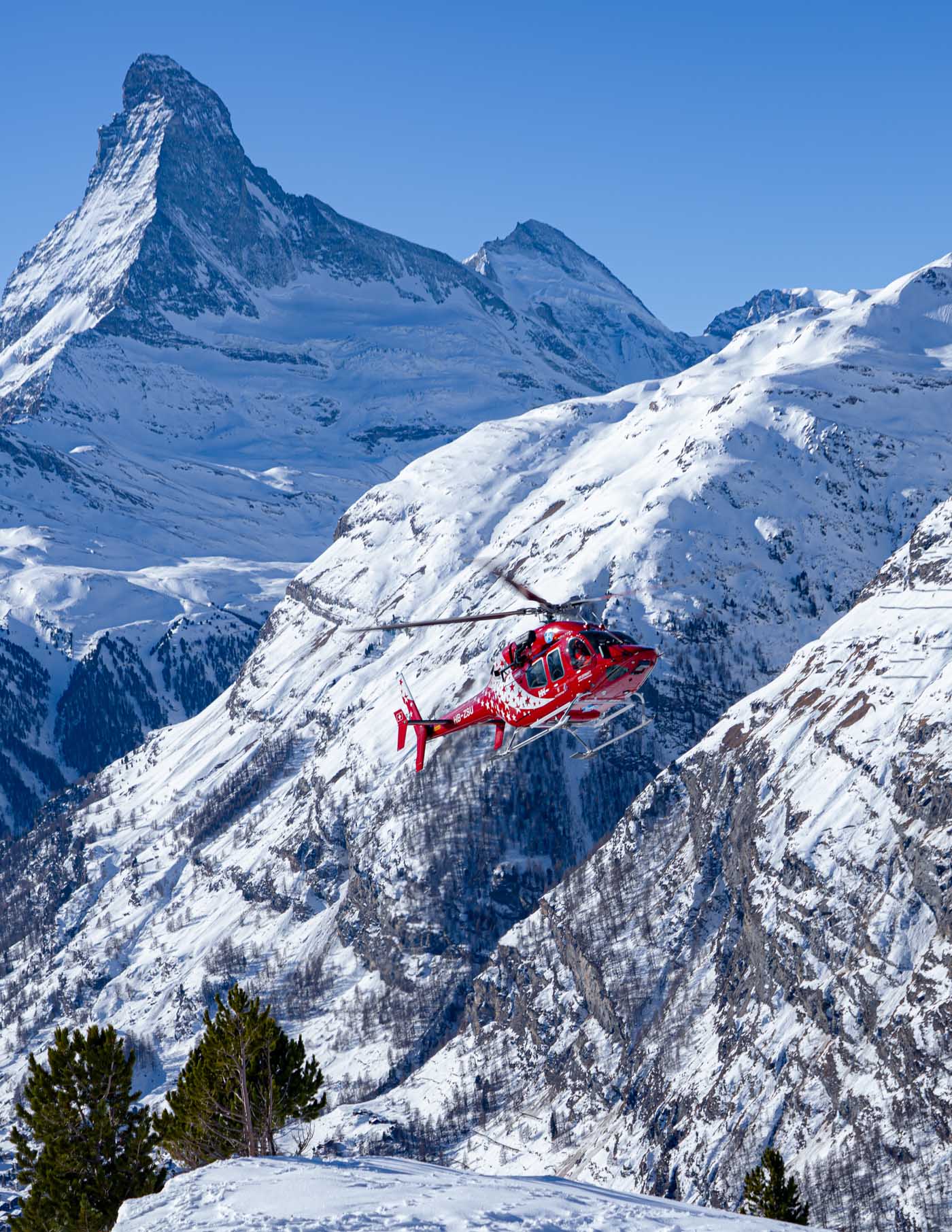
Into the future
Nearly a third of Air Zermatt’s 2,000 annual missions require a hoist, but commensurate with my aforementioned luck, none occurred during my time in the pilot’s seat. Fortunately, as our final day drew to a close, the crew was tasked to perform a dynamic hoist demo for the Norskluftamblanse (Norweigan HEMS) leadership. Like many other large European operators who have added hoists recently, Norskluftamblanse is looking to expand its capabilities beyond that of traditional HEMS. This offered us a chance to finally hop out and take some photos, while observing the technique Air Zermatt has helped refine into an industry standard.
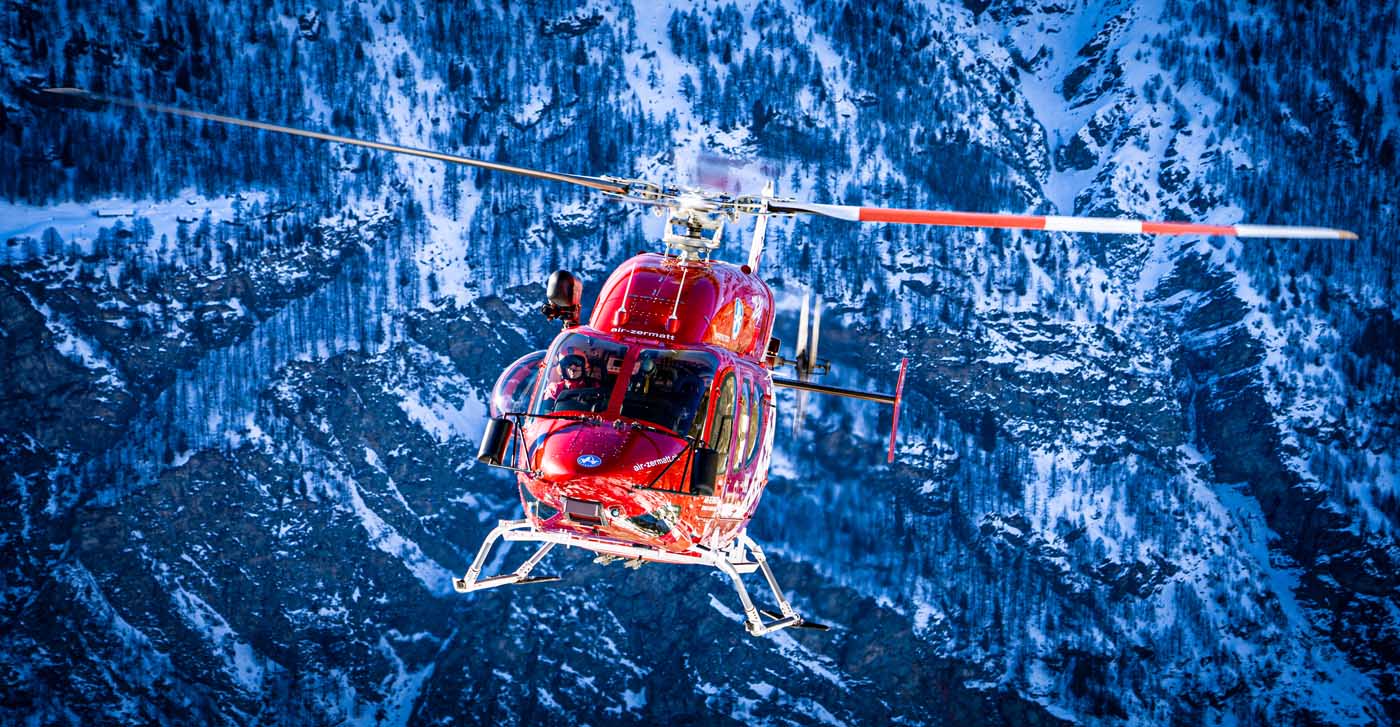
Dynamic hoisting is the concept of minimizing time in a hover, something I initially became familiar with due to tactical concerns. The added and most pertinent benefit for civilian SAR operations is the elimination of unwanted oscillations and the need for a tagline. It’s helicopter-dependent, but the general idea is to maintain a specific airspeed range while deploying and retrieving the basket, only pausing for the hoist rider to clip in or out.
This willingness to try and/or create new solutions was just one of many things that drew me to Air Zermatt. Things that could appear or “feel” risky are in fact well thought out and proven techniques to make operations safer without sacrificing capabilities. In what will likely never be a risk-free business, organizations that attempt to entirely avoid risk — rather than mitigate it with additional resources, technology, or training — arguably become less capable, less inoculated to stress, and less safe. When presented with an unexpected, stressful, or unplanned situation, this can lead to catastrophic consequences.
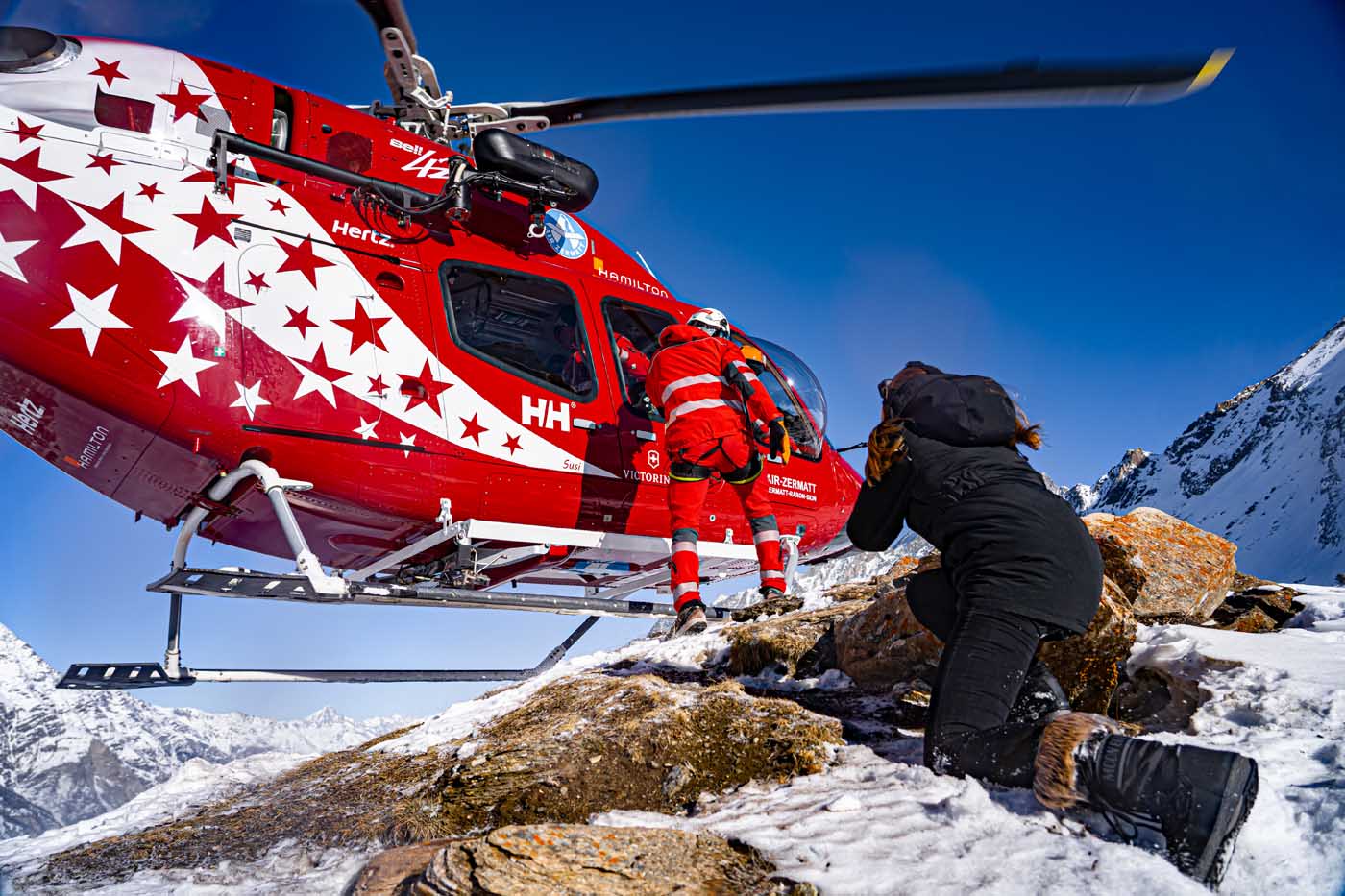
Air Zermatt has been able to safely and effectively operate in some of the world’s most challenging conditions by embracing this free flow of ideas and investing in its people. As we turned final for the heliport the last time, it would be a significant understatement to say we didn’t want to leave. The organization’s mission focus and camaraderie were infectious, not to mention the stunning equipment and surroundings. As Air Zermatt moves past its 50th year in existence and merges with former competitor Air Glaciers, it will be exciting to see what they have in store for the future.
The views expressed in this article are those of the author and do not reflect the official policy or position of Boston MedFlight, the U.S. Air Force, Air National Guard, Department of Defense, or the U.S. government.





